Guide to growing cannabis in Thailand successfully
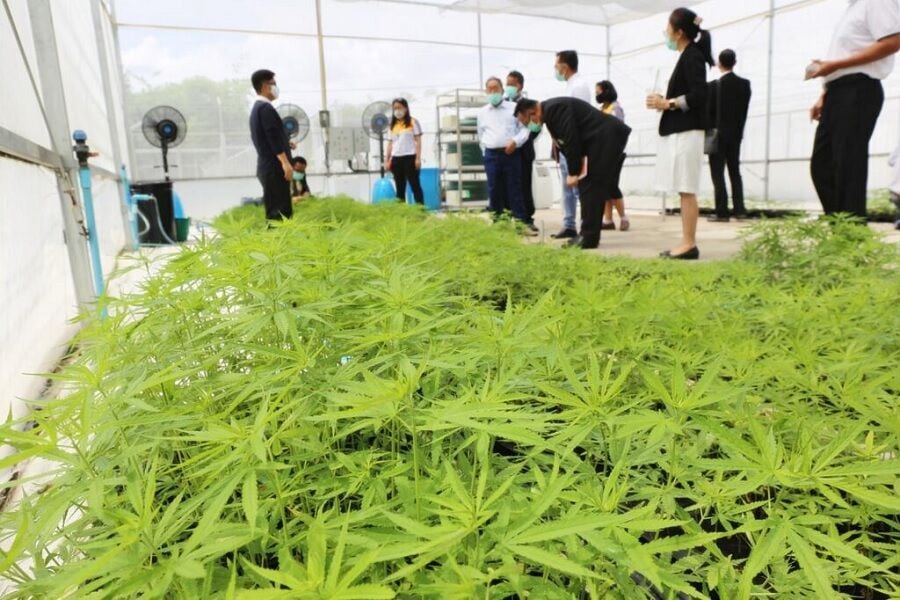
Ever thought about growing your cannabis? Whether it’s for medicinal purposes or simply a green-fingered hobby, cultivating cannabis can be an intriguing endeavour. This article is your gateway into the world of homegrown cannabis, providing you with the knowledge you need to get started.
What is cannabis cultivation?
Cannabis cultivation refers directly to the practice of growing cannabis plants. Both novice hobbyists and expert growers put this into action. Focusing on the production of flowers, these entities engage in the process. Usually, they target medicinal or recreational use of the flora. It’s a practice that dates back more than 5,000 years, illustrating the enduring human interest in this plant.
To understand how this process works, imagine nurturing the seeds from germination to the flowering stage. You monitor the plants closely, ensuring they receive the optimal amounts of light, water, and nutrients. Then, around the 8 to 14-week mark, you’ll notice the buds develop and start to bloom.
When growing cannabis, particularly in places like Thailand, cultivators primarily focus on two important stages. The first stage, known as the vegetative phase, involves the plant’s growth and maturation. The second stage, referred to as the flowering phase, is when the plant produces the much-desired buds.
During the vegetative phase, the cannabis plant focuses on growing tall and developing strong stems and leaves. This phase typically lasts between two and eight weeks. Careful attention to light access and steady nutrients support this important stage.

The second, the flowering phase, sees the development of the resinous buds that cannabis is renowned for. Excitingly, it’s during this stage that unique aromas and flavours start to appear. Timelines for the flowering phase vary between different cannabis strains, typically taking between eight and ten weeks.
Technical knowledge and attention to detail shape the foundation of successful cannabis cultivation. Recognizing and understanding the environmental needs of cannabis plants, from nutrient requirements to lighting conditions, is important. It’s in this way that you’ll harvest the highest quality cannabis flowers.
Growing cannabis legally
Navigating the world of legal cannabis cultivation can appear daunting. However, with a proper comprehension of the requirements and regulations, you’re set for success.
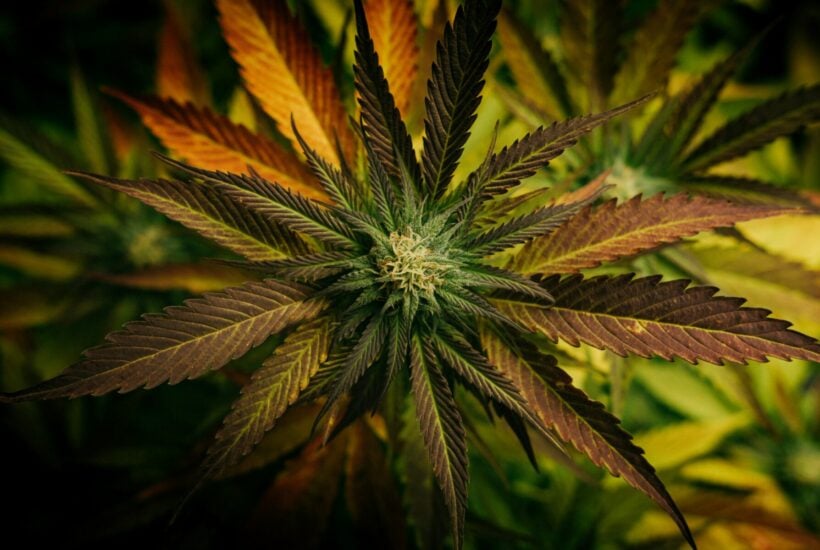
Licenses and permits
First off, understand that cultivating cannabis in Thailand necessitates a license from the Home Office. This license only authorises hemp cultivation where the tetrahydrocannabinol (THC) content doesn’t exceed 0.2%. If you wish to pursue industrial applications of hemp, an ‘Industrial Hemp‘ license would be your go-to.
Approved seed types
It’s important to remember that when deciding to grow cannabis, be cautious to use only seeds that are approved for cultivation. Specifically, the ones which maintain a THC content within the 0.2% limit.
Controlled parts of the plant
Interestingly, certain parts of the cannabis plant fall under legal control. With an Industrial Hemp license, you can’t exploit the leaves and flowers of the plant. Disposal of these elements becomes a requirement.
Industrial use of cannabis
Confirming the market scope for your hemp cultivation can be enlightening. Industrial hemp, for instance, nurtures a spectrum of commercial applications. From the generation of hemp fibre to producing seeds for oil, cosmetics, and supplements, the list spans wider if your products contain just trace amounts of THC.
By grasping these principles, your legal cannabis venture could flourish seamlessly. However, recall that these requirements might shift as the legal view for cannabis cultivation evolves. Stay in the loop and make sure you always uphold legal compliance.
How to grow cannabis: Getting started
Embark on your cannabis cultivation trip by determining the location for plant growth. The choice narrows down to two prime locations – indoor or outdoor.
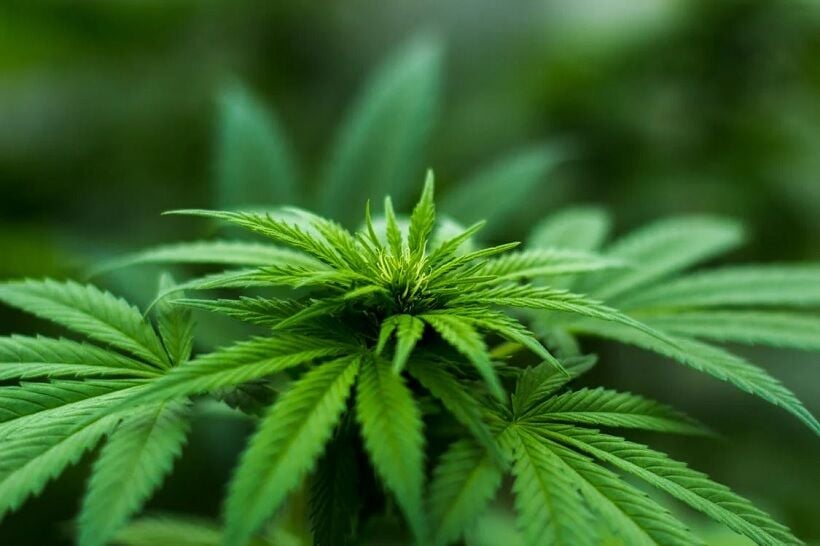
Step 1: Decide where you’re going to grow your cannabis plant
One crucial decision, when you begin growing cannabis, lies in deciding the placement of your plants. Both indoors and outdoors present unique benefits and challenges.
Indoor growth: Opting for indoor cultivation, you gain the luxury of controlling environmental conditions. Elements such as lighting, humidity, and temperature fall under your immediate control, which closely regulates your plant’s growth. However, this control comes at a price. Added expenses might include the cost of equipment such as lights and fans.
Outdoor growth: While opting to grow outdoors is less costly, it presents other challenges. Relying on nature’s availability of sunlight, humidity, and temperature implies a decrease in control over these crucial elements. The lessened control might impact the quality and quantity of potential yield. However, the financial relief offered by this choice merits consideration.
In both instances, your decision should connect with your convenience, budget, and expected quality and quantity of your output. Recall that success lies in harmonious balance!
Also, a crucial factor, specifically for readers in Thailand – is checking into local legalities for growing cannabis before starting.
Step 2: Choose a cannabis-growing medium
Once your placement choice is clear, the next crucial step is choosing the ideal growing medium serving your plants’ needs. The optimal choice correlates with your setup, goals, and expected yield.
Soil cultivation: Traditional yet effective, soil serves as a nutrient-rich platform for your plants. Soil-based growth is easy for beginners, affordable and imparts the plants with a natural flavour profile. Prioritize purchasing high-quality, organic potting soil to ensure a healthy start for your plants.
Hydroponics: This innovative approach involves aquatic plant growth, repealing the need for soil. While this choice speeds up growth and improves yields, it requires extra dedication and reversing water pollution. It’s more complex and demands a financial contribution for the necessary equipment.
Aeroponics: This advanced procedure suspends plant roots in the air, misting them with nutrient-rich water. It offers efficient growth and considerable yield – but requires a significant initial setup and careful maintenance.
Coco Coir: Environmentally friendly Coco Coir serves as a soil substitute. Made from coconut husks, this medium brilliantly couples traditional practices with hydroponic techniques. Coco Coir provides excellent water retention and aeration, perfect for melding old-school and new-age cannabis cultivation.
Recall to choose the medium aligning best with your setup and cultivation goals. Each offers unique benefits – it all comes down to which suits your situation best.
Cultivation requirements
Cannabis cultivation presents a bounty of benefits, with the quality of your yield hinging predominantly on a few crucial factors. These requirements cater to the unique needs of cannabis plants to encourage strong blooms and improved potency.
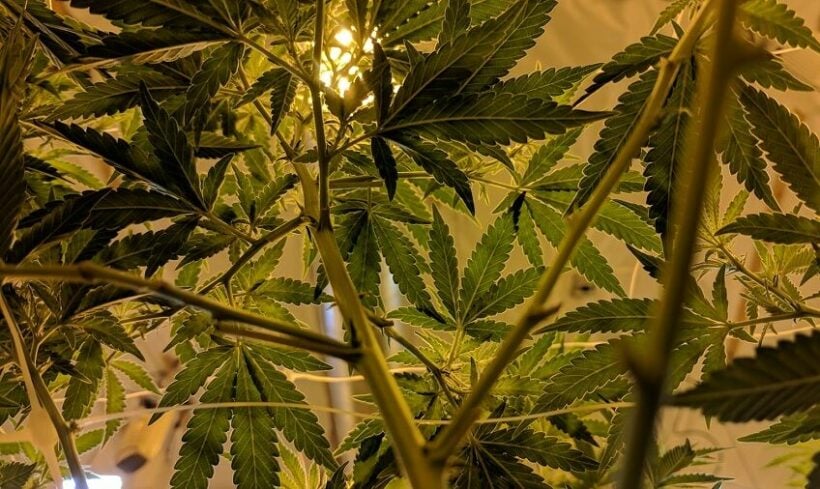
Growth medium
Embarking on your cannabis cultivation adventure, the choice of the right growth medium becomes significant. Soil serves as a natural buffer, while hydroponics promote rapid growth, and aeroponics offer enhanced aeration. Your choice, affecting both growth and the final product’s flavour, includes options such as soil, hydroponics, and aeroponics, or even a combination of coco coir, perlite, vermiculite, worm humus, Rockwool, bat guano, and mycorrhizae.
Warmth
Cannabis plants bask in warmth, making the maintenance of a controlled temperature range between 20°C and 30°C important for prolific growth. Above 31°C or below 15.5°C, you might observe a decline in THC potency and retardation in growth. Henceforth, frequent monitoring and alterations become indispensable to sustain favourable conditions.
Light
Light, a fundamental requisite, fuels your cannabis plants. Indoor cultivation necessitates the replication of the sun’s intensity using artificial lights. While a light schedule of 18 to 24 hours propels vegetative growth, a 12-hour schedule triggers flowering. Adherence to this light schedule amplifies both growth and potency.
Water
Cannabis plants love hydration but tread the fine line between hydration and waterlogging cautiously to prevent root suffocation. Watering should be perfectly balanced, avoiding both overwatering and underwatering, with adjustments according to the growth medium and stage of the plant.
Humidity
Precise humidity levels help thwart the threat of pest invasion and mould growth. Cannabis seedlings prosper at 70% humidity, which should be gradually reduced to around 40% by the time flowering comes into play, mimicking the natural decrease in humidity from spring to autumn.
Nutrients
Your cannabis plants thrive on a balanced diet of nutrients. Important ones include nitrogen, phosphorus, and potassium, although the recipe changes across various growth phases. Starting with a nitrogen-rich mix and transitioning to phosphorus and potassium when flowering begins proves advantageous.
Control of the atmosphere
The cultivation environment’s parameters–carbon dioxide levels, ventilation, and odour–aid growth and guarantee promising yields. Introducing additional CO2 can inject a growth boost, and effective ventilation ensures fresh air and temperature stability. Moreover, managing odour is essential for discreet cultivation practices.
Popularity and extent
Cannabis cultivation’s popularity, more so in places like Thailand, has seen a dramatic upswing, with individuals and professionals enthusiastic about nurturing the perfect plant. Whether you aim for personal, small-scale growth, or large, commercial operations, understanding, and controlling these important elements lays a solid foundation for successful cannabis cultivation.
Harvesting, drying and curing
Embarking on your trip of cannabis cultivation requires an understanding of the three crucial stages involved: harvesting, drying, and curing. Each stage has its significance in determining the quality, potency, and aroma of the final product.
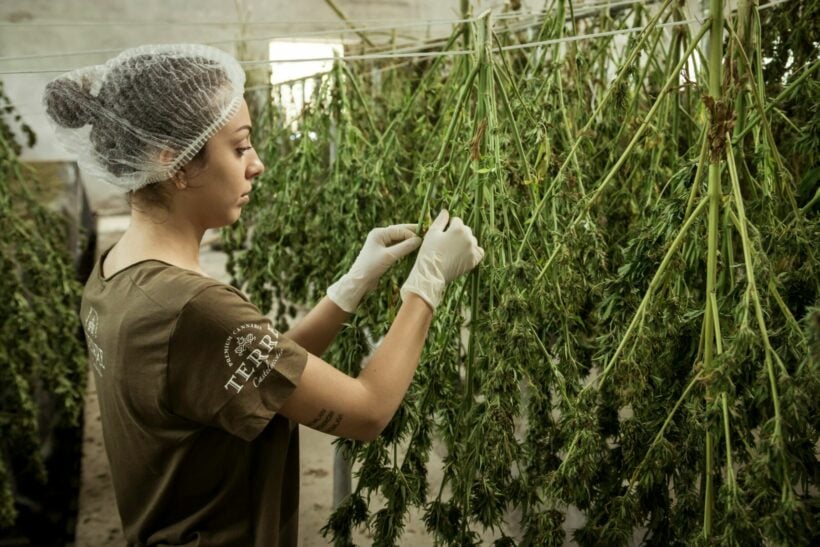
| Stage | Description | Duration | Key Points |
|---|---|---|---|
| Harvesting | Selectively picking mature cannabis flowers at the peak of potency and trichome development. | 10th – 14th week of growth cycle | * Timing is critical for optimal quality and cannabinoid content. * Observing pistil colour and trichome development helps determine harvest time. |
| Drying | Gently remove excess moisture from harvested buds to prevent mould and preserve flavour. | 2-7 days | * A controlled environment with proper airflow and temperature is essential. * Trimming (optional): removing excess leaves can be done before (wet trim) or after (dry trim) drying. |
| Curing | Slowing down the drying process of cannabis buds in airtight containers to enhance flavour, aroma, and potency. | N/A (Varies by preference) | * Curing allows for smoother smoke and refines the overall cannabis experience. * Ideal storage conditions involve consistent temperature, humidity, and darkness. |
Harvesting
In the 10th to the 14th week of the cannabis growth cycle, harvesting takes place. Pay attention to timing—it’s a determining factor in preserving optimal quality and potency. A misstep here could undermine your efforts to achieve the desired result.
Drying
After harvesting, take your cannabis through the drying stage – an important process to eliminate excess moisture from the buds. This step prevents mould infestation reliably, in addition to preserving the unique flavours and aromas of your cannabis. Depending on your preferred method, drying can take anywhere between 2 and 7 days. You have options of either wet trimming or dry trimming. The former refers to the process of trimming buds before drying, whereas the latter means drying the buds first before trimming them.
Curing
Making your final move, you now move into the curing phase. This round is the last stage and involves storing your dried buds in airtight containers. Curing aims to maintain the lovely flavours and aromas of your cannabis. This storage approach guarantees the final quality of your product.
Given the above explanation, the rage for cannabis cultivation in places like Thailand is no surprise. The detailed stages of harvesting, drying, and curing ensure you get the best out of your cannabis buds. With the right steps, your end product is prime for personal enjoyment or commercial distribution.
Stages of development
Delving deeper into the process of cannabis cultivation, let’s look into the fundamental stages of development. Each plays a crucial role, in ensuring the growth of a flourishing cannabis plant.
Germination
Kicking off the trip is the Germination stage. Here, the dormant cannabis seed stirs into life and kickstarts its growth. Spanning a period of 3 to 10 days, this stage centres on the absorption of water by the seed. This hydration sparks biochemical processes resulting in the initiation of growth, the first step in your trip towards cultivating cannabis.
Imbibition
Zooming in on a crucial phase of germination, we stumble upon Imbibition. This process sees your seeds guzzling water, causing them to expand, and in turn, activating them. Quite fascinatingly, imbibition softens the protective seed coat. This allows the embryo to push through, grow and start its trip of becoming a full-fledged cannabis plant. If you’re in Thailand and exploring cannabis growth, knowing about imbibition becomes a critical piece in your understanding of the broad canvas of cannabis cultivation.
Seedling
Following germination, you’ll transition into the Seedling stage, spanning typically 2-3 weeks. This phase is hallmarked by the sprouting of traditional cannabis fan leaves. An intriguing aspect here is the plant’s vulnerability to disease and mould. It’s during this stage your plant will demand diligent watering and light management. With the knowledge of these stages, your trip towards cannabis cultivation in Thailand is likely to be successful and rewarding.
Pest management
Successful cannabis cultivation goes above providing the best growing conditions; it also involves an effective pest management strategy. Falling victim to an infestation not only reduces your crop yield but can cause severe damage. Therefore, it’s critical to recognise common pests in cannabis cultivation, specifically among Thailand’s cannabis cultivators.
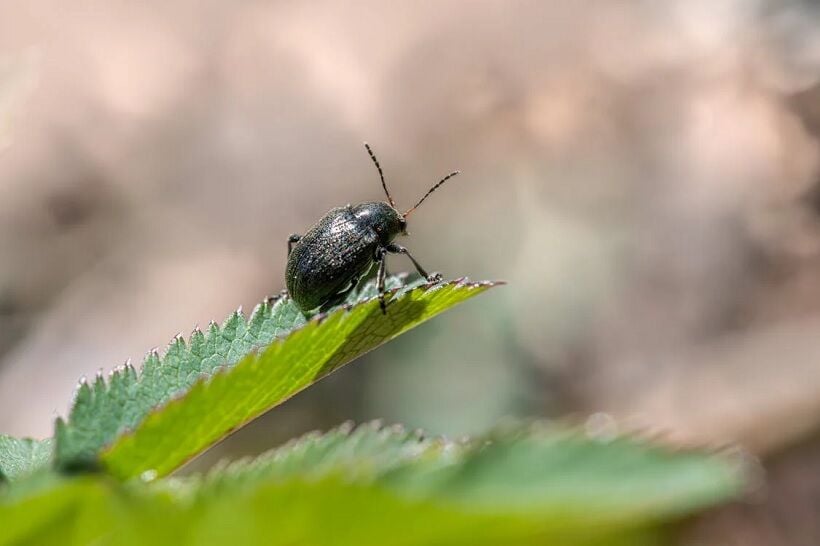
- Ants and aphids: Predominantly harmful, ants interfere with the root system, and aphids are foliage-destroyers. They’re successfully deterred by applying insecticidal soaps imbued with peppermint or orange oil.
- Thrips: Despite their minute size, their presence is detrimental. Manifestations include brittle leaves and silver markings on leaves. They’re handled best using biological control methods such as predatory nematodes or soil mites. These soil-dwelling organisms feast on thrip larvae. Additionally, certain wasp species feed on adult thrips, contributing to pest control.
- Birds and moles: Larger pests though they may be, their threat is just as significant. They cause substantial damage if they’re uncontrolled. Erecting bird-repellent balloons and mole-excluding fences are proven measures against their incursion.
- Japanese beetles: This newly reported pest in Thailand is yet another threat. The ongoing development of methods to address this issue emphasises the imperative nature of pest management in cannabis cultivation.
With careful vigilance and an appropriate pest management strategy, maintain the health of your cannabis crop. Recall, preventive measures are always better than dealing with an established infestation. Keep a watchful eye out for these common pests to secure a hearty cannabis yield.
Plant training
Transitioning from the cultivation intricacies such as atmosphere control, nutritional balance, or the stages of germination, let’s nose dive into an equally vital aspect of growing cannabis, plant training. This technique manipulates the physical structure of the cannabis plant, propagating more branches to generate hefty top colas.
Topping
Topping stands out as a favoured method of in-plant training. Veering off from the plant’s tip instigates a growth spurt in lower branches, pushing them to develop into main stems. It’s a proactive approach, requiring you to trim the top of a primary stem, forcing the cannabis plant to adapt by establishing multiple colas.
Ensuring your plant basks evenly in the available light, topping amplifies yields. Remember that the vegetative phase is the prime time to the top. Missteps like topping during the flowering stage could backfire, drawing back plant growth, and decreasing yields.
Pinching
Pinching, or as some might prefer, intrudes into the elite list of plant training techniques. Coincidentally, diversions aside, the application of these methods in cannabis cultivation routines, specifically in countries like Thailand, significantly boosts yield efficiencies. Stay tuned for direct applications and an in-depth look into these methods.
Other helpful resources
- Growing cannabis in Thailand? Never grow alone with Growland Dispensary and Grow Shop
- Greening the Thai cannabis industry: Environmental effects
- Ultimate guide to cannabis forums
- Why cannabis grown outside in the sun is better
- How to clone your cannabis plant
- How to set up organic cannabis farm in Thailand
- How to protect growing cannabis from heat stress
- Grow top cannabis strains like a pro in Thailand
- Green growth: Nurturing diversity and inclusion in cannabis
- Cannabis cultivation in Thailand: Eco-friendly or eco-foe?
- Indoor vs outdoor: secrets to thriving cannabis in Thailand
- Top cannabis strains to grow in Thailand revealed
Frequently Asked Questions
How much space is necessary for cannabis cultivation?
For optimal growth, each cannabis plant typically requires 3-4 square feet, including several feet above the plant for vertical growth. Common spaces include unused closets, spare rooms, or designed grow tents.
What is the standard yield of a cannabis plant?
The yield can vary dramatically depending on various factors. However, an outdoor plant typically produces approximately 1/2 pound of buds (around 224g), and an indoor plant has a 1/4 pound of buds (about 112g).
What factors can accelerate cannabis growth and boost size?
Cannabis plants grow faster and larger with sufficient water, air, light, soil nutrients, and appropriate temperature. Cultivator’s attention and care greatly influence the plant’s performance as well.
How does a cannabis plant appear at 4 weeks?
At week 4 of flowering, cannabis plants usually cease growth and focus energy on bud development. The buds themselves become larger and denser. White hairs continue to emerge from the buds.
What is the average cannabis growth period?
The overall growth duration for a cannabis plant varies from 4 to 8 months, depending on the cultivation conditions. In an indoor grow room with controlled environmental factors, plants can be prompted to flower in a few weeks.
Latest Thailand News
Follow The Thaiger on Google News:


























